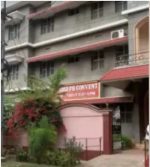New Delhi: Around 4 million items, comprising medicines, oxygen cylinders and masks, received in foreign aid have been distributed to 38 institutions and hospitals, mostly run by the federal government in 31 States and Union Territories, according to a statement issued by the Union Health Ministry.
Amid the second wave of Covid-19, with over 300,000 cases being reported daily, India for the first time in 17 years decided to accept foreign aid.
Emergency aid continued coming into the country from various countries. Seven tankers with 20 metric ton Liquid Medical Oxygen (LMO) each arrived at the Mundra port in Gujarat from United Arab Emirates (UAE), which is the first such shipment of LMO to India, according to the Ministry of External Affairs.
In a joint effort by the U.K. with the Indian Air Force (IAF), an IAF transport aircraft ferried 450 oxygen cylinders to Chennai, while the 5th in a series of consignments carrying medical equipment, 545 oxygen concentrators, arrived from the U.S.. Also, a shipment from Kuwait arrived in India with 282 oxygen cylinders, 60 oxygen concentrators, ventilators and other medical supplies.
Out of the eight hospitals in Delhi, six that received the aid sent from foreign countries are run by the Central government. Delhi is one of the worst affected States hit by oxygen shortage with the Central government and the Aam Aadmi Party-led Delhi government sparring over the oxygen allocation. Oxygen allocation is being centrally controlled by an empowered group of officers.
The Lady Hardinge Medical College, Safdarjung Hospital, Ram Manohar Lohia Hospital, All India Institute of Medical Sciences, Defence Research and Development Organisation (DRDO), National Institute of Tuberculosis and Respiratory Diseases in Delhi have received the foreign aid, the Ministry said. Two other hospitals in Delhi and a hospital run by the Indo Tibetan Border Police (ITBP) in Noida have also received such aid.
24 categories of items
The 24 categories of items that have been received from foreign countries include BiPAP machines, oxygen concentrators and cylinders, PSA oxygen plants, pulse oximeters, drugs such as Flaviparivir and Remdesivir, PPE coveralls, N-95 masks and gowns, the Ministry said.
Worldview With Suhasini Haidar | Why has India accepted foreign aid after 17 years?
The states and UTs that have received the items or are in the process of getting them are Andhra Pradesh, Assam, Bihar, Chandigarh, Chhattisgarh, D&N Haveli, Delhi, Goa, Gujarat, Haryana, Himachal Pradesh, Jammu and Kashmir, Jharkhand, Karnataka, Kerala, Ladakh, Lakshadweep, Madhya Pradesh, Maharashtra, Manipur, Meghalaya, Mizoram, Odisha, Puducherry, Punjab, Rajasthan, Tamil Nadu, Telangana, Uttar Pradesh, Uttarakhand and West Bengal.
“The allocations are done keeping in mind equitable distribution and the load on tertiary [specialized] health care facilities. In the first few days, the States were covered via the AIIMS and other central institutions where the critical care patients load is high and where the need is highest. Besides, the Central government hospitals, including DRDO facilities in and around Delhi and in the National Capital Region were also supplemented through the aid. It has been seen that tertiary health care facilities normally have higher number of cases with severe symptoms of Covid and are often the only succour to people in the region for quality tertiary care,” the Ministry said.
The Ministry prepared a standard operating procedure on May 2 and decided that since such grant-in -aid was limited in quantity it has to be optimally utilised by allocating it to the high burden States.
“Spreading such grant-in-aid thinly each time, over a large number of States may not bring forth the desired results. It will also lead to small packages travelling large distances, high turnaround times and possible wastage of resources,” it said. It was also decided that the resource-low States in the Northeast and hill States where tankers cannot reach easily can also be covered to shore up their needs.
It noted that the Indian Red Cross Society (IRCS) would receive the consignments coming in as donations from foreign countries.
HLL Lifecare Limited (HLL) is the customs agent for the IRCS, and the distribution manager of the Health Ministry. “The consignments are processed at airport and transported for distribution by HLL. In case of consignments arriving at military airports, or bog items like oxygen plants, the Dept. of Military Affairs (DMA) assists HLL,” it said.
U.S. defence company Raytheon Technologies Corporation announced that it was donating 1,000 oxygen concentrators, which have already started arriving in India, through the U.S.-India Strategic Partnership Forum and organizations actively working with the government across the country. “These life-saving devices will be distributed where the need is the greatest, including those communities where our employees work and live,” the company said in a statement.
Last week, aircraft manufacturer Boeing announced a $10 million emergency assistance package for India.
Source: thehindu.com









